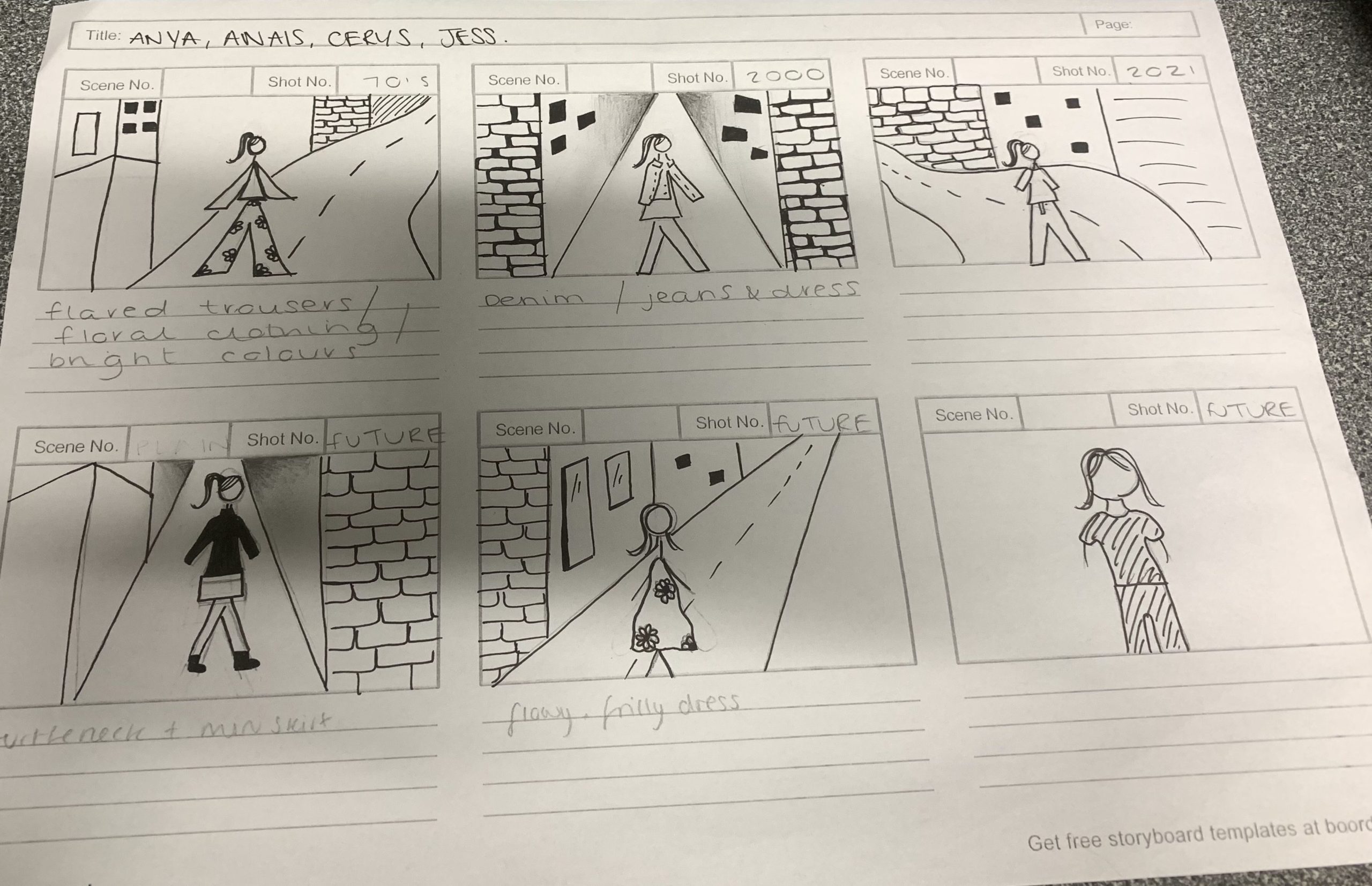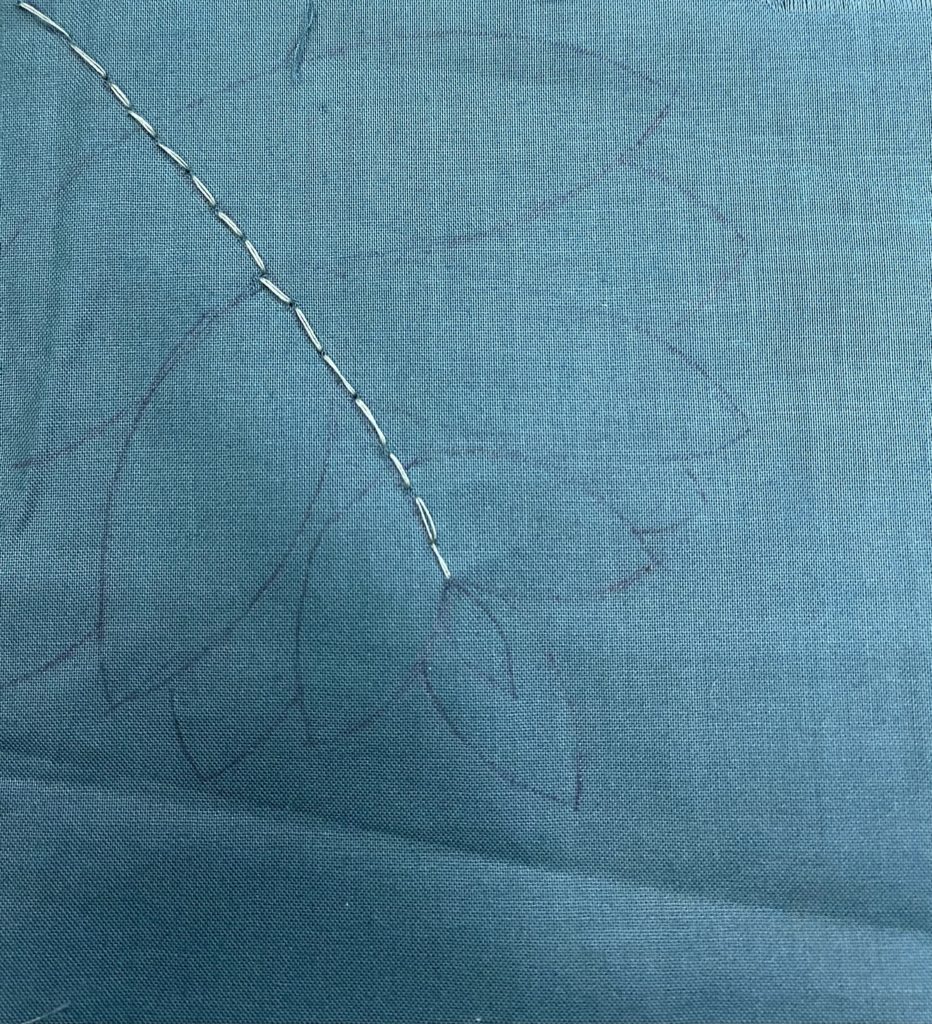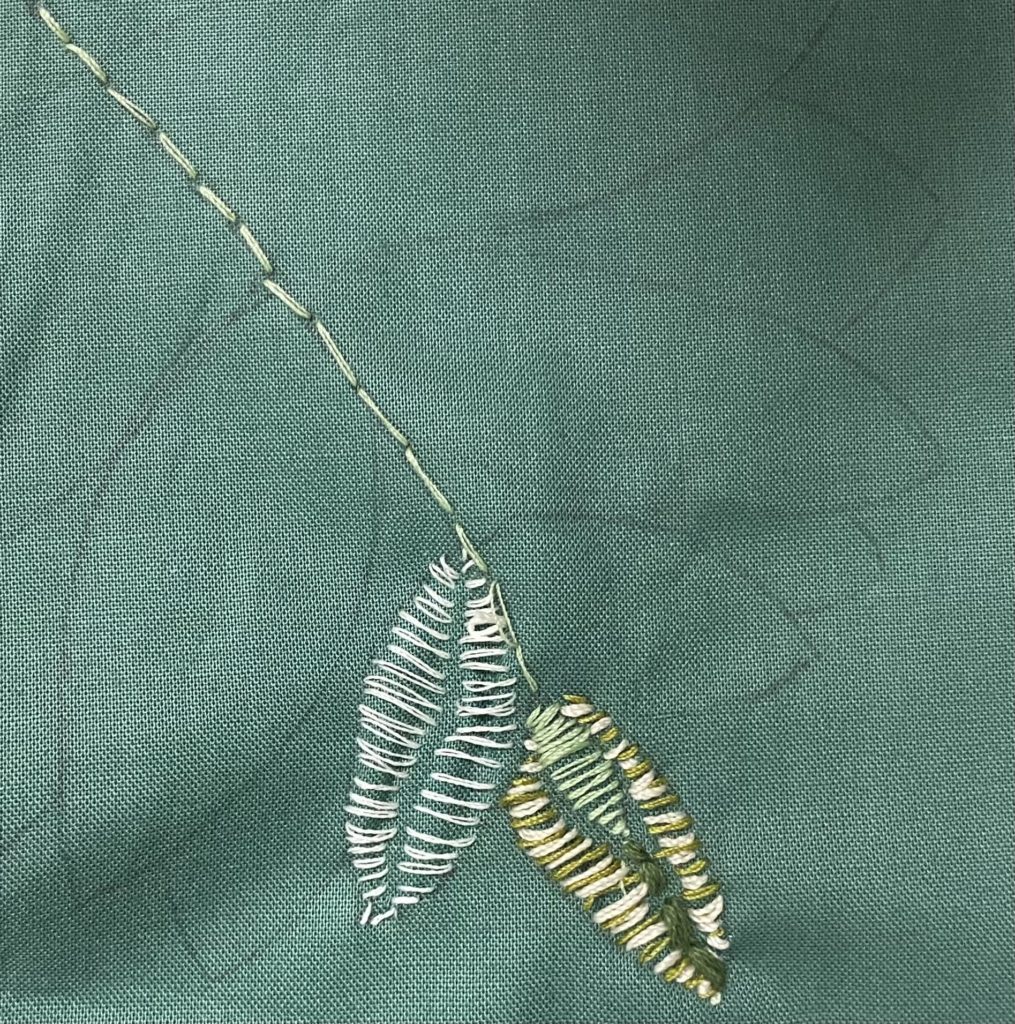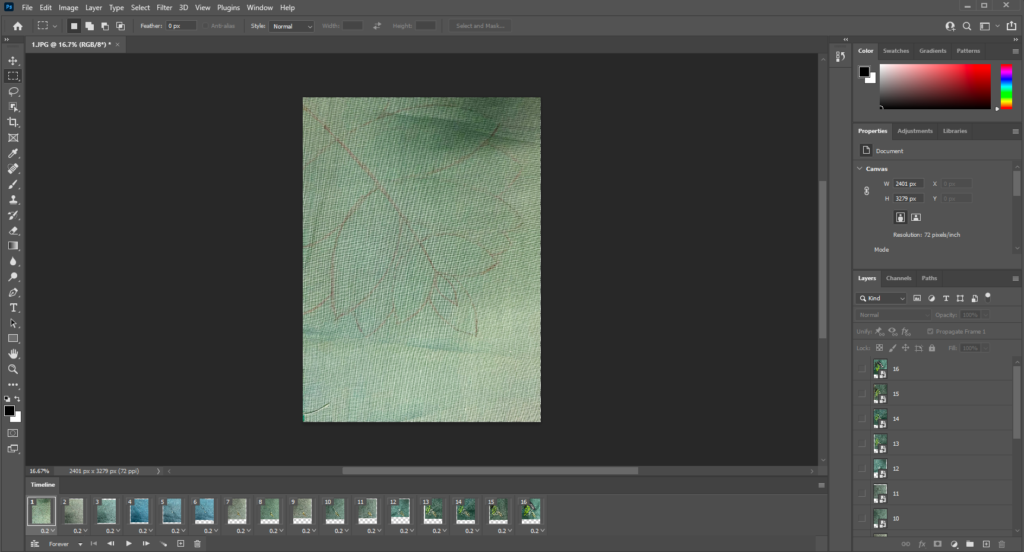

70’s 
2000s 
2021 
future 
future 
future
Plan
| What | We will be filming someone walking infront of a still image that we have found in the archives from that time period or a photo we have taken. |
| Where | Hautlieu drama studio. |
| Who | Everyone in our group will being in the video all dressing up as the different eras. |
| How | We will use a projector and blank white screen to project on and have the camera set up on a tripod. We will take multiple shots with different models and outfits and then edit them to make it look like the models are walking seamlessly as one and all flow into one 30 second video. |
| When | After school, however when the shoot is done doesn’t matter as we are using artificial lighting. |
| Why | We want to show the difference in clothes over the years and that no matter how much technology and the world changes clothes stay the same and come back into fashion. |
Shot type
Shot type: Long shot
Location: Drama studio with projector background of image from archives or one we have taken.
Props: Phone, headphones or object from the specific era
People: The people in my group (Cerys, Anais, Anya and Jess)
Summary
Our 30 second clip will consist of someone from the group walking in front of a screen where a image to match that era will appear and they will be wearing iconic clothes to match. The clip will cut from different eras while the model walks looking like they are continuously walking through the different eras. The end will have short cuts from each scene with new outfits from alternative eras then suddenly stop while the model turns towards the camera dressed in all black with a plain white background to leave the viewers thoughts open to interpretation.





































